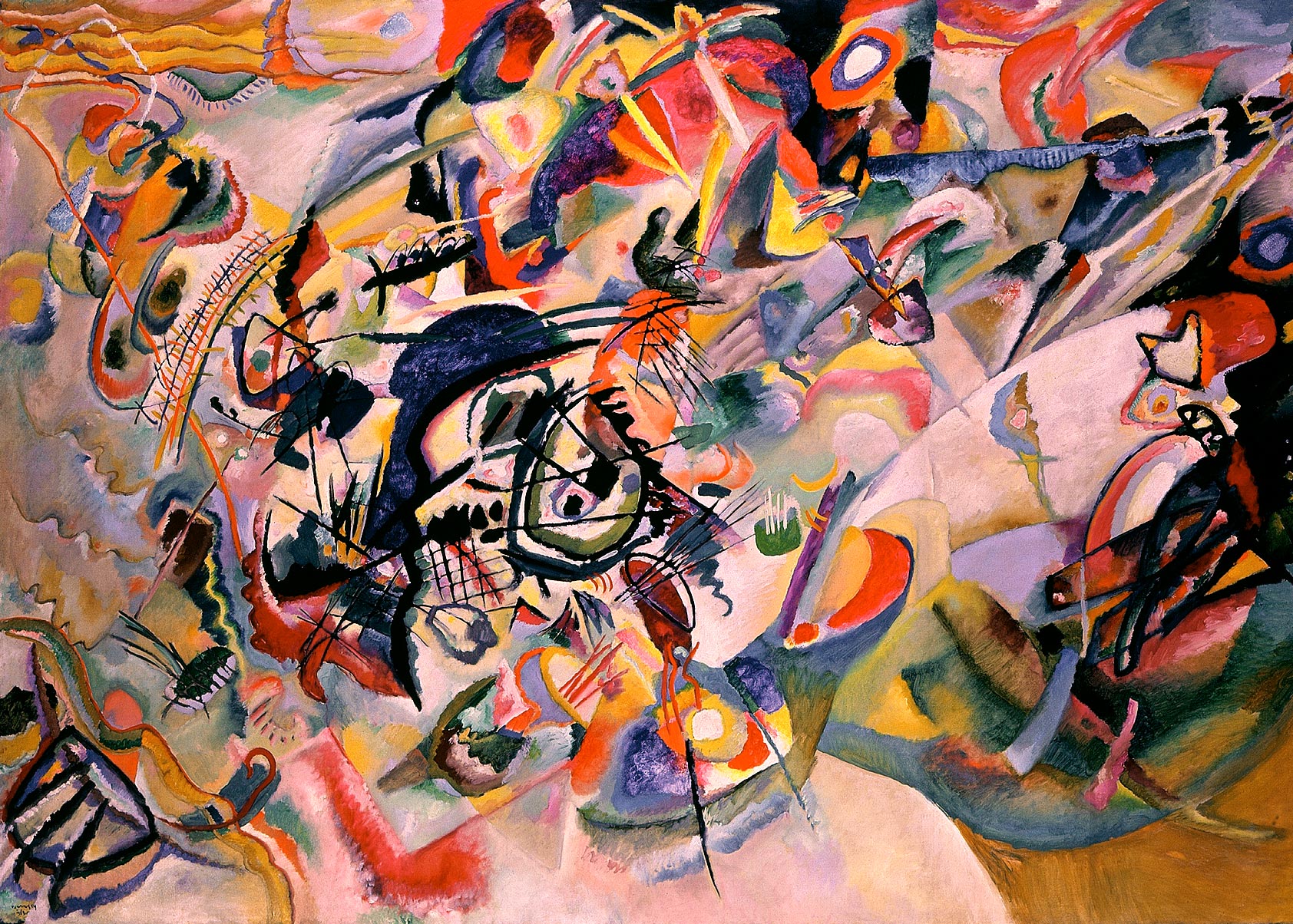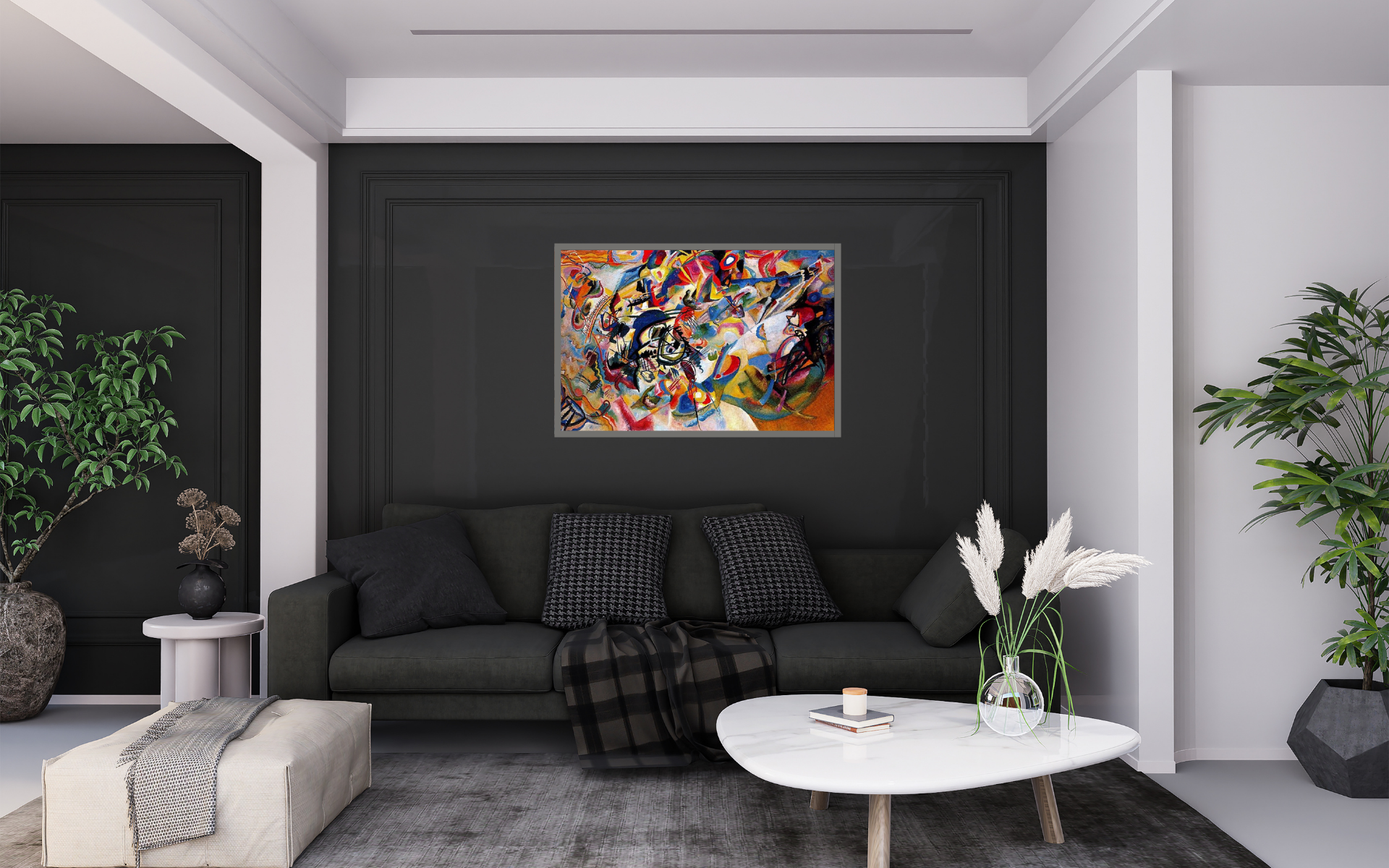Composition VII
Painted in 1913, Composition VII by Wassily Kandinsky is a landmark of early abstract art, measuring 302.3 cm by 200.7 cm and housed in the Tretyakov Gallery, Moscow. The vast canvas is a swirling symphony of color and form, reflecting Kandinsky’s belief that painting could evoke music-like emotions. Though non-representational, abstracted shapes hint at apocalyptic themes of destruction and redemption. Created through over thirty preparatory studies, the final work layers vibrant forms in dynamic harmony, abandoning traditional depth. Composition VII remains one of Kandinsky’s most celebrated masterpieces, exemplifying his vision of abstraction as a universal spiritual language.
Ratings / Reviews
Información adicional
| Dimensions | Original: 302.3 cm x 200.7 cm, Small: 120.9 cm x 80.3 cm, Medium: 181.4 cm x 120.4 cm, Large: 241.8 cm x 160.6 cm |
|---|
$396.00 – $2,424.00Price range: $396.00 through $2,424.00
Painted in 1913, Composition VII by Wassily Kandinsky is widely regarded as the pinnacle of his pre-World War I achievements and one of the defining works of early abstract art. Measuring an expansive 302.3 cm by 200.7 cm, and housed in the Tretyakov Gallery in Moscow, the painting encapsulates Kandinsky’s vision of abstraction as a universal language of form, color, and emotion.
This monumental canvas is a swirling maelstrom of colors and dynamic shapes, a visual symphony that reflects Kandinsky’s belief that painting could evoke sensations akin to music. The title itself, Composition VII, underscores his alignment with musical terminology, highlighting his goal of freeing painting from literal subject matter. In this work, traditional spatial depth is abandoned, replaced by a polyphonic layering of lines, arcs, and colors that create a sense of motion, rhythm, and crescendo.
Though non-representational in its overall impact, the painting carries symbolic echoes of themes Kandinsky explored throughout the 1910s—apocalypse, destruction, and redemption. The composition contains abstracted glyphs that may suggest boats, oars, mountains, or figures, intertwined in a chaotic yet harmonious whole. These forms are linked to recurring spiritual themes in his earlier works, such as The Last Judgment, The Resurrection, and All Saints’ Day. Rather than depicting these scenes literally, Kandinsky reimagines them as abstract spiritual energies moving across the canvas.
The creation of Composition VII was itself an extraordinary process. Kandinsky produced more than thirty preparatory studies in ink, watercolor, and oil, developing individual visual motifs in a way he described as “polyphonic.” These elements evolved independently, each carrying its own rhythm and emotion, before converging in the final painting.
At the heart of the work lies Kandinsky’s conviction that color and form can transcend cultural barriers, communicating directly to the human spirit. Circles, curves, and vibrant fields of color create a pulsating interplay of tension and release, suggesting a cosmic cycle of chaos and renewal. This was a pivotal moment in Kandinsky’s career, where his expressive abstraction embraced a wholly non-objective visual language while still retaining profound emotional resonance.
Today, Composition VII is celebrated as one of the great masterpieces of abstract art, embodying Kandinsky’s radical vision and his belief in painting as a vehicle for universal spiritual expression.


